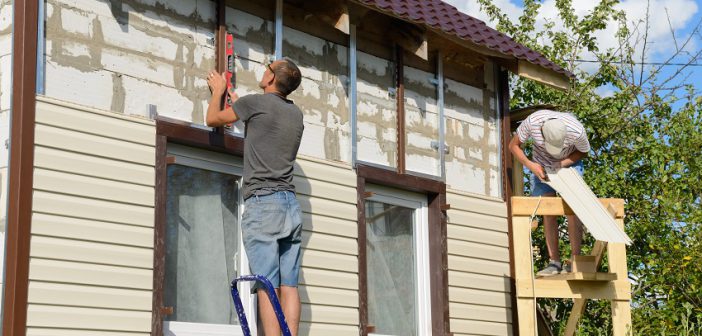Are you worried that your home may be subject to subsidence? There are several causes of subsidence, and some are more common than others. It’s important to be aware of the signs of subsidence so that you can spot any issues early and find a resolution before they affect your property significantly. If you leave subsidence untreated, it can be very expensive and time-consuming to fix.
With this in mind, we have created this guide highlighting the size most common signs of subsidence. Take a look at each of the most common signs of subsidence in more detail below.
What Is Subsidence?
Subsidence can be an absolute nightmare for homeowners as it’s a very serious problem and can affect the structural integrity of the home. Subsidence is when the ground beneath your home starts sinking, which can cause your home’s foundations to collapse and sink further into the ground. The entire property will be weakened and could be at risk of collapse.
It’s important to deal with subsidence as early as possible, as fixing subsidence costs a lot if it is left untreated. You can save a lot of time and money by dealing with subsidence as early as possible.
Large Cracks in The Wall
One of the most common and most noticeable signs of subsidence is the appearance of large gaps or cracks in the walls of the property. Subsidence cracks usually have some common characteristics that you can notice, making them easier to identify.
Subsidence cracks tend to be:
- Diagonal in shape
- Wider at the top and slimmer at the bottom
- Often found close to windows and doorframes
- Usually wider than 3mm
- Visible on the inside and outside of the property
If you notice one or more of the characteristics listed above on your property, contact your home insurance company as soon as possible.
If you notice any cracking at all on your home that is likely to be above a tree’s root system, this is a cause for concern, so this should also be reported quickly. Contact your insurer as soon as you notice anything like this, and they will send a structural engineer out to inspect your house and provide a diagnosis. The problem can then be dealt with accordingly.
Sticking Doors and Windows
You may notice that the windows and doors of your home start sticking, not closing properly, or are swinging open and closed on their own. If you have noticed this, get in touch with your insurer, as this could be a sign of subsidence.
Subsidence causes structural instability, which can cause your door and window frames to warp. This will then mean that your windows and doors will become misaligned and may cause them to become difficult to operate in their usual way. Also, you should look out for any gaps or cracks that appear around your windows or doors.
Sinking Floors
If you notice that your floors are becoming unstable, sloping, or sinking, this could be a sign that the ground underneath your property is sinking or collapsing. If you notice any gaps appearing underneath your skirting boards, this is urgent, and you should immediately contact your insurer to discuss the next steps.
Sloping floors are more common in older properties and may sometimes indicate past movement rather than a current issue with subsidence. If you are considering purchasing an older property with sloping floors, make sure you get a report from a structural engineer so that you can be sure that subsidence is not an issue at that property.
Creases in Wallpaper With No Signs of Damp
If you have noticed that the wallpaper on your walls is rippling or creasing, this may be a sign of subsidence. Most often, these issues are caused by dampness. However, if you have no signs of damp in your property, these problems could be caused by subsidence.
If you have tiled walls, you may notice that cracks may start appearing in the grout, or you may see gaps forming between the tiles. This is also a sign of subsidence. If you notice these issues, be sure to report them immediately to your insurance company.
Extension Coming Away From The Property
Another common sign of subsidence is if you notice that an extension on your property is coming away from the home or if you start to notice cracks appearing in the walls where the extension meets the house.
Older properties that were built in the Edwardian or Victorian eras tend to have simple, shallow foundations. New extensions will have deeper foundations in order to comply with the relevant building regulations that were introduced from the mid-1960s onwards.
Newer extensions on older homes will also be built with different materials than the house. The extension will be built with stronger and more durable materials, whereas older properties were usually built with more flexible materials.
With all of these differences, the two different parts of the home (the original house and the extension) may move at different rates. This could cause cracking and structural damage. This is even more true when the home is built upon cohesive soils.
Visible Leaning of The Property
Finally, the last common sign of subsidence is the visible leaning of the property. However, noticeable leaning doesn’t always mean that there is a subsidence problem. Subsidence issues could be historic, and the building may now be stabilised and may not have moved at all in many years.
If you are considering purchasing a new property and you’ve noticed that part or all of the home looks wonky, you must make sure a structural engineer inspects the property for any signs of current subsidence. They will be able to determine the issue and inform you if the subsidence problem is historic and no longer something to worry about.
However, you should keep in mind that purchasing a property with past subsidence could make the property more difficult to sell in the future and may make it more difficult to obtain insurance, so keep this in mind when making your purchase.





How to make a beautiful porch renovation?